Lit Hub’s Most Anticipated Books of 2019
What We're Looking Forward to, the First Half and Then Some
2018 was a year of ups and downs, and I expect no less from 2019. But whatever else the new year brings, it will also bring a slew of good books, including buzzy debuts (Sophie Mackintosh! Kristen Roupenian! T Kira Madden!), long-awaited returns (Elizabeth McCracken! Arundhati Roy!), plenty of exciting new releases from beloved writers (Sally Rooney! Helen Oyeyemi! Marlon James!), and everything in between. There’s so much good stuff heading our way that it was tough to narrow down our picks. Actually, as you’ll see, we didn’t do all that great on the narrowing front. Which only means: more books for you to be excited about. So now, without any further ado, here are Literary Hub’s most anticipated books of 2019 (so far)—look out for another installment this summer. NB: All dates listed subject to change at the whims of the publishers in question.
JANUARY
 Lili Anolik, Hollywood’s Eve: Eve Babitz and the Secret History of L.A.
Lili Anolik, Hollywood’s Eve: Eve Babitz and the Secret History of L.A.
Scribner, January 8
Twenty years ago, after a car accident left public personality and writer Eve Babitz covered in burns, she largely drew back from public view. Lili Anolik pursued Babitz for years in an effort to tell her story after falling in love with Babitz’s writing; the result is an investigative, nuanced look at her story, intertwined with the sex and celebrity of Los Angeles life in the 1960s and 70s. (Corinne Segal)
 Lyndsay Faye, The Paragon Hotel
Lyndsay Faye, The Paragon Hotel
Putnam, January 8
Lyndsay Faye continues her reign as the queen of smart, feminist historical crime writing with her Oregon-set The Paragon Hotel, in which a refugee from the Mafia washes up on the Pacific Coast in 1921 only to find herself engaged in battle with the powerful local branch of the KKK. I can’t wait to follow Faye’s colorful characters in their battle against American-brand evil. (Molly Odintz)
 Stephen Mack Jones, Lives Laid Away
Stephen Mack Jones, Lives Laid Away
Soho, January 8
Stephen Mack Jones’s August Snow is still making waves as one of the most innovative and exciting new PI novels to come around in some time, a bold new take on the classic form and a much-deserved spotlight on Detroit. In this new installment, August Snow is the only man who knows Mexicantown well enough to investigate a human trafficking ring taking advantage of ICE raids. This is noir as it was meant to be: incisive, socially conscious, distinctly situated, and told with real style. (Dwyer Murphy)
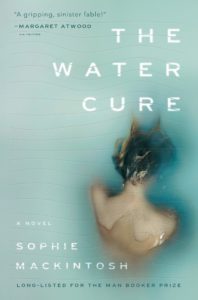 Sophie Mackintosh, The Water Cure
Sophie Mackintosh, The Water Cure
Doubleday, January 8
A dreamlike, hypnotic novel, sometimes lovely but more often terrifying, in which we meet three sisters raised to believe that their bodies are both vulnerable and dangerous—but not so dangerous as the world beyond their small island, and not half so dangerous as the bodies of men. But when men from that outside world do intrude, as of course they must in stories like these, the sisters begin to figure out the truth—of desire, of safety of their past, of their parents—for themselves. (Emily Temple)
 Mesha Maren, Sugar Run
Mesha Maren, Sugar Run
Algonquin, January 8
There’s an awful lot of talk about the underrepresentation of rural (or suburban, or urban) working class life in the higher echelons of American literary culture. And while to some extent that might be true, the stories are there, as are the writers, we just need to pay attention. To wit, Mesha Maren’s debut novel, about a young woman’s return to rural West Virginia after 18 years in prison, deserves your attention. (Jonny Diamond)
 Chigozie Obioma, An Orchestra of Minorities
Chigozie Obioma, An Orchestra of Minorities
Little, Brown, January 8
The latest novel from Man Booker finalist and author of The Fishermen follows a Nigerian poultry farmer on a quest to win the hand of the woman he loves—which means selling everything he owns to go to college. But when he gets to the school, he discovers he’s been tricked, and all of a sudden, his journey towards true love gets a whole lot longer. (ET)
 Samanta Schweblin, tr. Megan McDowell, Mouthful of Birds
Samanta Schweblin, tr. Megan McDowell, Mouthful of Birds
Riverhead, January 8
Schweblin’s Fever Dream had everyone in the Literary Hub office glued to their couches—with every light in the house burning—in 2017. Despite its slimness, we could talk of no other book for weeks, and her first collection to be translated into English promises to be equally terrifying and equally riveting. In “Headlights,” the first of the 20 stories, a bride is abandoned by her brand new husband on the side of the road after stopping to pee. From the field beyond comes a pack of jilted, angry brides to welcome her in. Thus begins a surreal and uncanny and perfectly discomfiting collection that will likely keep us all up for many nights to come. (ET)
 Laura Sims, Looker
Laura Sims, Looker
Scribner, January 8
This debut is a penetrating and unsettling psychological thriller. A woman’s fixation on her neighbor, a well-known actress, goes from unhealthy to something far more sinister after the women meet at a summer block party. It’s a novel about identity, appearances, and envy, and it’s one of the season’s most timely reads, an innovative experiment in what a thriller can be. (DM)
 Sarah Moss, Ghost Wall
Sarah Moss, Ghost Wall
FSG, January 8
We might all think we want to go back to simpler times, but Ghost Wall could have you thinking again. In this story, a young woman joins her obsessive father and his anthropology students for their Iron Age reenactment. They use survival skills, work with primitive tools, and learn about rituals of the past. Then they build their own ghost wall, out of sticks and ancestral skulls. That’s when they really begin to learn something about the past, being human, and the sacrifices you have to make. (Katie Yee)
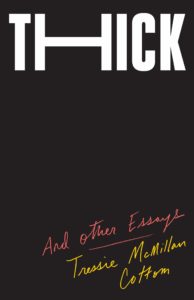 Tressie McMillan Cottom, Thick: and Other Essays
Tressie McMillan Cottom, Thick: and Other Essays
The New Press, January 8
With biting wit and wisdom, Tressie McMillan Cottom writes about everything from beauty to Trump in this collection of personal essays. Praised by Roxane Gay and compared to the work of Rebecca Solnit and bell hooks, Thick is a bold first collection that takes a scalpel to our society and probes the personal and the political. Also, it has its own playlist. (KY)
 Tessa Hadley, Late in the Day
Tessa Hadley, Late in the Day
Harper, January 15
Hadley’s sixth novel explores the relationships between two couples (and longtime friends) as they mourn the death of one of their own. The novel moves between past and present to trace the characters’ relationships over time, as well as the destruction wrought by grief. I love a well-drawn portrayal of complex group dynamics, so I’m looking forward to this one for when I’m in the mood for some emotional intensity. (Jessie Gaynor)
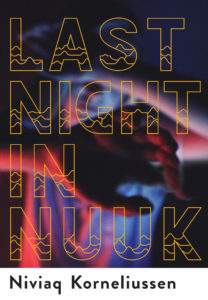 Niviaq Korneliussen, Last Night in Nuuk
Niviaq Korneliussen, Last Night in Nuuk
Black Cat, January 15
This remarkable debut novel took Scandinavia by storm with its vivid up-to-date portrait of life in Greenland. Skipping between five characters, from a woman who has just sworn off men to another coming out the other side of gender reassignment surgery, it assembles itself before your eyes, just as its characters do, caught, as often so many of us are, between what we are and what we are supposed to be. Emails and Facebook messages mix with conventional narration, chronicles of parties and their gritty aftermath, producing a jittery, tense texture that feels a lot more like modern life, and yet you emerge with a strong feeling that the novel of the future might look a lot like this one because of the depths of character it produces with such energy and charm. (John Freeman)
 Sam Lipsyte, Hark
Sam Lipsyte, Hark
Simon & Schuster, January 15
Sam Lipsyte’s Home Land is one of the funniest books I’ve ever read. It was the first book I gave my fiancé, and it was 100% just a gift and not a humor test. If Lipsyte started writing sponsored content for air filtration devices, I would probably read it. Luckily, he wrote a new novel instead! Hark is a satire about an “unwitting mindfulness guru” (guru culture—endlessly fascinating!) who is ill-prepared for the messianic status he attains. I can’t wait to read it, then probably buy it for everyone as a thoughtful gift that is in no way a test. (JG)
 Kristen Roupenian, You Know You Want This
Kristen Roupenian, You Know You Want This
Scout Press, January 15
The hotly anticipated full collection from the writer who set the internet ablaze with “Cat Person” will surprise some readers—it’s much more heavily weighted towards horror than it is towards realist social dynamics. That is, unless you consider a woman who desperately wants to bite those around her, but particularly this one sexual harassing jerk at her office, as a realist social dynamic . . . which I have to admit I sort of do. (ET)
 Dani Shapiro, Inheritance: A Memoir of Genealogy, Paternity and Love
Dani Shapiro, Inheritance: A Memoir of Genealogy, Paternity and Love
Knopf, January 15
In this memoir, Shapiro discovers that despite being her “father’s daughter,” she is, in fact, not—at least in the traditional sense—when a DNA test reveals she doesn’t share any genes with her father’s side. After learning she was a “test tube tot,” Shapiro unpacks a beautiful and heartbreaking narrative of paternity, genetics, and family. (Emily Firetog)
 Leila Slimani, tr. Sam Taylor, Adèle
Leila Slimani, tr. Sam Taylor, Adèle
Penguin, January 15
She appears to have the perfect life: a family with her surgeon husband, a gorgeous apartment. But the 35-year-old heroine of Leila Slimani’s latest novel is bored in her marriage and has begun living a complex double life. Sneaking out of work for sex with men. Putting the numbers of those she’d go to bed with again on a secret second mobile phone. Gradually, her risks get bigger as she seduces even her husband’s colleague, her boss, men she’s not even attracted to. Over the course of this novel it becomes clear the fever of her pursuit of sex has tipped over into an obsession. Once again Slimani unveils a story which reads us and our moral reactions as we turn its pages. (JF)
 Linn Ullmann, tr. Thilo Reinhold, Unquiet
Linn Ullmann, tr. Thilo Reinhold, Unquiet
W. W. Norton, January 15
Drawing from a conversation she had with her father, the late filmmaker Ingmar Bergman, this exquisite and warm novel is a family story told in reverse. The book’s narrator plans to write a book with her father, a well-known director, and begins the research, journeying out to the island home where she spent time as a child growing up. Seven years later, after his death, Ullmann’s heroine comes back to the material and begins to realize how much it has changed with time, how unstable even the basic facts can feel when time bends hit in middle age. This is a very good book about motherhood, its joys and terrors, about the difficulty of no longer being a living person’s child. Of how that departure is not entirely replaced by family-making of one’s own. Among Norway’s contemporary writers, Ullmann might be the finest sentence by sentence. Here she blasts her story into fragments and puts it back together, piece by piece, with the artistry of someone who has always secretly known the broken things are most beautiful. (JF)
 Karen Thompson Walker, The Dreamers
Karen Thompson Walker, The Dreamers
Random House, January 15
Walker’s bestselling debut, The Age of Miracles, imagined what might happen if the earth’s rotation began to slow. Her second book also features a mysterious widespread affliction, though a much less global one: here, a mysterious sleep epidemic strikes a California town, as one, then 22, then 500, then almost the entire town falls into a deep slumber. They don’t appear to be in pain, but they cannot be wakened. And then they begin to dream. (ET)
 Stephanie Land, Maid: Hard Work, Low Pay, and a Mother’s Will to Survive
Stephanie Land, Maid: Hard Work, Low Pay, and a Mother’s Will to Survive
Hachette, January 22
“My daughter learned to walk in a homeless shelter,” Land tells us in this affecting debut memoir about life as a single mother living in poverty after having escaped an abusive relationship. Land describes working as a part-time housekeeper, cleaning the houses of those better off (but not necessarily happier) than she, the casual disregard Americans fling at those who are poor (like cruelty from strangers who saw her using food stamps), and the dream of being a writer and love for her daughter that got her through it all. (ET)
 Juliet Lapidos, Talent
Juliet Lapidos, Talent
Little, Brown, January 22
Lapidos’s debut novel tells the story of an uninspired grad student (attempting to write a thesis on—what else—inspiration) who develops an obsession with the notebooks of an author who was himself stricken with writer’s block. It sounds both funny and creepy, which is a tricky combination that, when handled well, is one of my favorites. (Also, let’s be honest—who doesn’t want to read about someone else struggling to write?) (JG)
 David Treuer, The Heartbeat of Wounded Knee
David Treuer, The Heartbeat of Wounded Knee
Riverhead, January 22
Billed as a “sweeping history—and counter-narrative—of Native American life from the Wounded Knee massacre to the present” this book is both those things and maybe more. Treuer, who is Ojibwe, from the Leech Lake Reservation in northern Minnesota, is a wonderful novelist, and if anybody can tell this story in the way it needs to be told and retold, until the end of time, he can. (JD)
 Benjamin Dreyer, Dreyer’s English: An Utterly Correct Guideline to Clarity and Style
Benjamin Dreyer, Dreyer’s English: An Utterly Correct Guideline to Clarity and Style
Random House, January 22
The internet’s grammarian-in-chief also happens to be a real, live copy chief, for a book publishing concern called Random House. The nice thing about Dreyer’s approach to all things copy related is that he is neither doctrinaire nor wishy-washy, and anyone who cares a wit about the elegance of language ought to have this on their shelf. (And now I am very anxious about hyphen placement—and absence—in this blurb.) (JD)
 Ben H. Winters, Golden State
Ben H. Winters, Golden State
Mulholland, January 22
From the modern master of speculative noir comes a new version of alternate reality in which lies are outlawed, and only those who work for the “Speculative Service” are allowed to . . . well, speculate. Winters always finds a way to get at a larger truth about our present even as he plays games with what we consider to be an acceptable form of reality, and his new work is sure to delight in the science fiction and crime worlds. (MO)
 Claire Adam, Golden Child
Claire Adam, Golden Child
SJP for Hogarth, January 29
The second book published by Sarah Jessica Parker’s new imprint is a fierce debut set in Trinidad that revolves around a pair of twin boys—one good and one bad—and the impossible choice that their father must make. Which boy to save: the genius or the rebel? (ET)
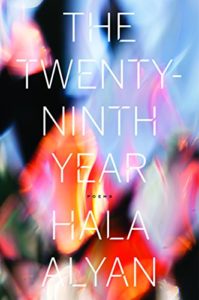 Hala Alyan, The Twenty-Ninth Year
Hala Alyan, The Twenty-Ninth Year
Mariner, January 29
Alyan’s forthcoming poetry collection examines her 29th year as a particular milestone in her life and all that that kind of reflection entails: lost loves, old friends, trauma and joy, lives led on multiple continents… This is the stuff of life, the very essence of the poetic. (JD)
 Emily Bernard, Black is the Body: Stories of My Grandmother’s Time, My Mother’s Time, and Mine
Emily Bernard, Black is the Body: Stories of My Grandmother’s Time, My Mother’s Time, and Mine
Knopf, January 29
Bernard’s quasi-memoir is a beautiful and important examination of race through her lived experience—from growing up black in the South and getting a PhD from Yale to marrying a white man and adopting children from Ethiopia. Bernard is a clear and confident writer, forthcoming with her own uncertainties and the ambiguities of how race plays into her relationships with her own history as well as her relationship with others. (EF)
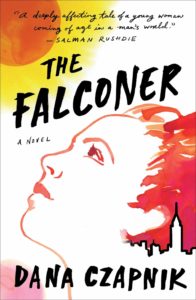 Dana Czapnik, The Falconer
Dana Czapnik, The Falconer
Atria, January 29
You may not think we need any more coming-of-age stories set in New York City, but this book—about a 17-year-old “pizza bagel” (read: half-Italian, half-Jewish) girl in love with her best friend—may just change your mind. (ET)
 Pam Houston, Deep Creek
Pam Houston, Deep Creek
W. W. Norton, January 29
In this book of essays, the celebrated author of Cowboys Are My Weakness pays eloquent, tough-talking homage to her 120-acre ranch in the Colorado Rockies—and the animals and plants that live on it. Houston is one of our best writers about the natural world around us and our place in it, and here she’s writing about that patch of world closest to her heart. We could all benefit from these lessons. (ET)
 Will Hunt, Underground: A Human History of the Worlds Beneath Our Feet
Will Hunt, Underground: A Human History of the Worlds Beneath Our Feet
Spiegel & Grau, January 29
A thoughtful and often romantic examination of humanity’s relationship to underground spaces—the Paris catacombs, the New York City subway tunnels, ancient Australian mines, caves, bunkers, tombs, and hidden cities. This is no travel guide, but a historical and philosophical examination the dual nature of what’s beneath us: since the birth of civilization, the underground has been a subject of fascination and fear, a symbol of birth and of death, of deprivation and of abundance, for the humans who walk above it. It remains a mystery, but this book brings us a little closer to illuminating the darkness. (ET)
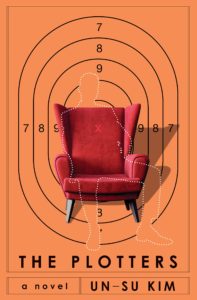 Un-su Kim, The Plotters
Un-su Kim, The Plotters
Doubleday, January 29
This stylish thriller follows a professional assassin who works for a host of shadowy underworld kingpins known as “plotters,” but soon begins to question the morality of his profession. With such literary touches as a library headquarters for assassins, this one may pander a bit to bookish audiences—and I’m all in favor of that. (MO)
 Maurice Carlos Ruffin, We Cast a Shadow
Maurice Carlos Ruffin, We Cast a Shadow
One World, January 29
Working at a prestigious law firm in the south in the near future, the narrator of this blisteringly intelligent debut faces a terrible choice. The arc of justice, even for one as successful as himself, has become more of a downslope. He still gets stopped routinely by police, and their televised abuse of other men less employed than him has become sadistic. He also faces the usual insinuating as to why exactly he was hired. And so when he begins to hear that a procedure has developed which can slowly bleach his biracial son’s blackness out of him, Ruffin’s narrator seriously considers it. What follows is less a satire than a full-throated novelistic debut of ferocious power and grace. Anyone reading a literary journal in the last few years knows Maurice Carlos Ruffin can write a killer essay on just about any topic. Here, though, is exactly what he is for—telling a story that refracts the insanity of the world into a shape so unique you wonder how this book wasn’t there all along. (JF)
 Hans Ruin, Being with the Dead: Burial, Ancestral Politics, and the Roots of Historical Consciousness
Hans Ruin, Being with the Dead: Burial, Ancestral Politics, and the Roots of Historical Consciousness
Stanford, January 29
I’m finishing up my second viewing of Six Feet Under, and Thomas Laqueur’s astounding 2014 tome The Work of the Dead: A Cultural History of Mortal Remains is still one of my favorite books about death, the dead, the dying. It sounds like philosopher Hans Ruin’s Being With the Dead will be a worthy spiritual companion. It’ll explore everything from mortuary rituals to the drive for longevity. The social bonds between the living and the dead are about as timeless as a subject can get. (Aaron Robertson)




















